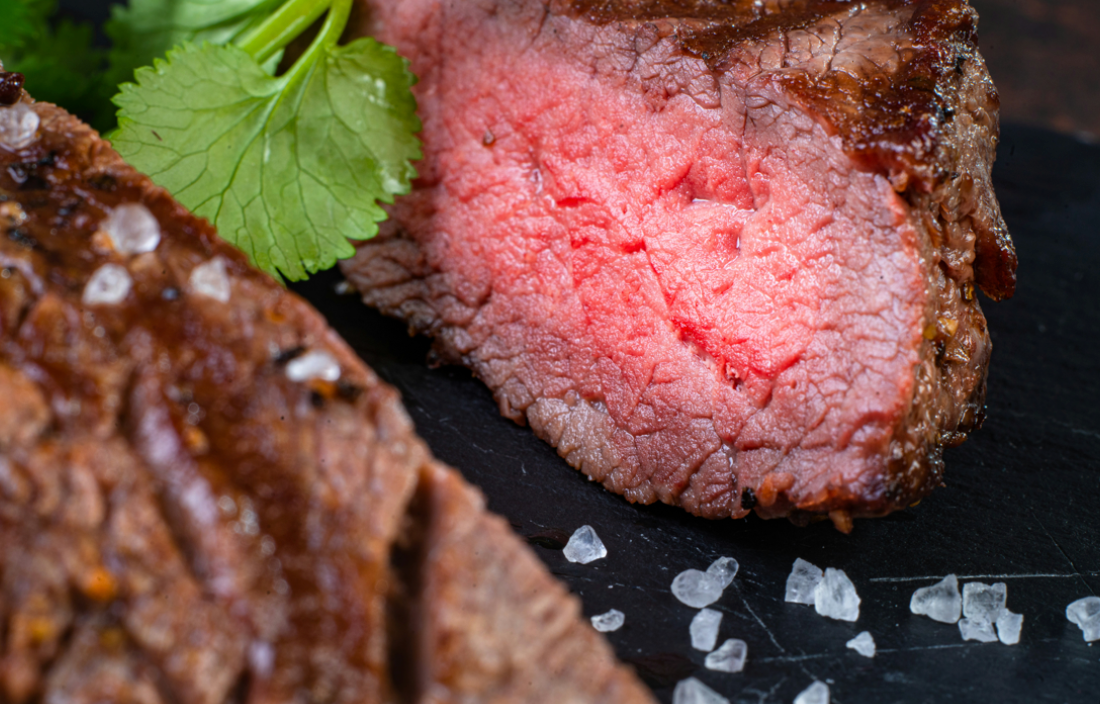
What’s Really in Your Beef? Understanding Beef Labeling and Certifications
Share
When you pick up a package of beef at the grocery store or order a beef box online, you’re often met with a variety of labels—USDA Prime, organic, all-natural, hormone-free, antibiotic-free. But what do these terms actually mean? If you’re serious about buying high-quality, transparent beef, understanding these labels is essential.
Decoding USDA Beef Grades: Prime vs. Choice vs. Select
The USDA grading system is designed to help consumers understand the quality of the beef they are purchasing. There are three primary grades you’ll see in stores and online retailers:
-
USDA Prime: This is the highest grade of beef, known for its abundant marbling (the fat within the meat). Marbling enhances tenderness, juiciness, and flavor. Prime beef is often found in high-end restaurants and steakhouses, but you can also find it through specialty beef providers.
-
USDA Choice: Choice beef has slightly less marbling than Prime but is still high quality. It offers a good balance of flavor and tenderness, making it a popular choice for consumers looking for premium beef without the higher price tag of Prime.
-
USDA Select: This is the leanest of the three major grades. It has less marbling, which means it may not be as tender or flavorful as Prime or Choice. However, Select beef can still be excellent when cooked properly using marinades or slow-cooking methods.
These grades are based on two factors: the amount of marbling in the beef and the age of the cattle at processing. The more marbling, the higher the grade.
All-Natural vs. Organic Beef: What’s the Difference?
One of the most confusing aspects of beef labeling is the distinction between "all-natural" and "organic" beef. While these terms might sound similar, they have very different meanings.
What Does "All-Natural" Beef Mean?
-
The USDA defines "natural" beef as minimally processed and free from artificial ingredients or added colors.
-
However, "natural" does NOT mean the cattle were raised without antibiotics or hormones.
-
It also doesn’t guarantee that the cows were pasture-raised or fed a specific diet.
In short, all-natural beef is more about how the meat is processed rather than how the cattle were raised.
What Does "Organic" Beef Mean?
-
Organic beef must meet strict USDA Organic Certification standards.
-
The cattle must be raised without antibiotics or synthetic hormones.
-
They must be fed a 100% organic diet, which means their feed (including grains) is grown without synthetic pesticides or fertilizers.
-
Cattle must have access to pasture for at least 120 days per year.
While organic beef is highly regulated, it doesn’t always mean it’s superior in taste or nutrition compared to other high-quality beef options. Many consumers assume organic beef is always pasture-raised, but this isn’t necessarily the case.
What "Hormone-Free" and "Antibiotic-Free" Really Mean
When buying beef, you may see terms like "hormone-free" and "antibiotic-free" on the label. Here’s what those claims actually mean:
Hormone-Free Beef
-
Technically, no beef is 100% hormone-free because all animals (including humans) naturally produce hormones.
-
However, some cattle are given growth hormones to speed up weight gain. If a beef product is labeled "No Added Hormones," it means the cattle were raised without these growth-promoting hormones.
-
The use of added hormones is prohibited in organic beef and in beef raised under certain certification programs.
Antibiotic-Free Beef
-
Some beef is labeled "No Antibiotics Ever," which means the cattle were raised without any antibiotics.
-
If cattle do get sick and require antibiotics, they are typically removed from these programs.
-
Even when antibiotics are used, there are strict withdrawal periods before processing to ensure no antibiotic residues remain in the beef.
How to Ensure You’re Buying High-Quality, Transparent Beef
With all these labels and claims, it can be tough to know what you’re really getting. Here are some tips to ensure you’re purchasing high-quality, ethically raised beef:
1. Buy Directly from Ranchers
One of the best ways to ensure you’re getting the highest quality beef is to buy directly from ranchers who prioritize transparency. At Sweat Cattle, we believe in ranch-raised beef that is raised with care, without the confusion of misleading labels.
2. Look for Beef That Matches Your Values
-
If you want beef without added hormones or antibiotics, look for certified programs that guarantee this.
-
If you prefer beef raised on a family-run ranch, choose direct-to-consumer beef sellers.
-
If flavor and quality are your top priorities, focus on marbling and beef grades rather than organic certification.
3. Research the Farm’s Practices
-
Does the farm raise its cattle in a stress-free environment?
-
What do they feed their cattle? (At Sweat Cattle, our beef is ranch-raised and grain-finished for optimal flavor and tenderness.)
-
How do they handle animal welfare? Farms that prioritize ethical treatment tend to produce higher-quality beef.
Making an Informed Beef Choice
Understanding beef labeling is essential for making informed choices about the meat you buy. Whether you prefer USDA Prime beef, ranch-raised beef, or hormone-free options, knowing what each label means can help you find the best beef for your needs.
At Sweat Cattle, we take the guesswork out of buying high-quality beef. Our ranch-raised, grain-finished beef delivers exceptional flavor, tenderness, and nutrition—without misleading labels or marketing gimmicks. When you buy from us, you know exactly where your beef comes from.
Ready to taste the difference? Check out our premium beef boxes and enjoy top-quality beef raised with care. Click here to shop now!

